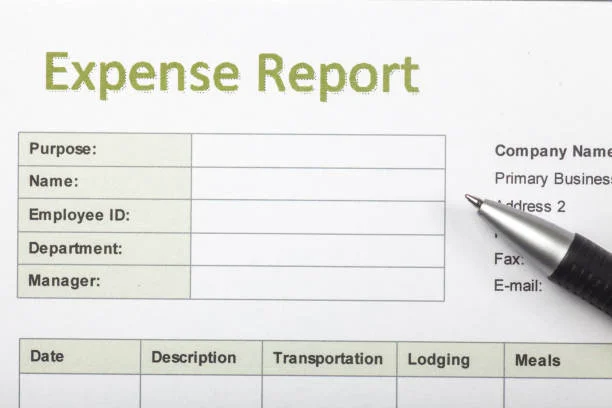Managing business expenses is no longer just about keeping receipts in folders or updating spreadsheets at the end of the month. As companies grow, so do transactions, reimbursements, vendor bills, and recurring payments, making manual expense tracking prone to errors, delays, and unnecessary financial leaks. That’s why businesses today are shifting toward digital expense tracker tools.
A reliable expense tracker not only simplifies day-to-day expense recording but also brings transparency, accurate reporting, and faster decision-making. Whether you are a small business owner, freelancer, or part of a large team, choosing the right tool plays a major role in controlling costs and staying tax-ready.
In this blog, we’ll explore the five must-have features every business expense tracker should include.
Discover insights that matter—check out this related post and stay ahead today!
What Makes a Good Business Expense Tracker?
A good business expense tracker goes beyond simply recording costs; it helps businesses stay organized, compliant, and financially aware. The best tools make expense tracking effortless by allowing users to log entries instantly, categorize spending, attach receipts, and monitor costs in real time.
A reliable system should eliminate manual errors, automate repetitive tasks, and provide easy access from any device. With built-in reporting and data insights, companies can analyze spending patterns, prepare for tax season, and maintain accurate books without stress. Security is equally important, ensuring sensitive financial data stays safe.
A business expense tracker should save time, improve accuracy, and offer full visibility, empowering businesses to make smarter financial decisions.
5 Must-Have Features to Include in Business Expense Tracker
A business expense tracker can have multiple features to help businesses manage their finances. Here, we are considering the five essential features listed below.
1. Smart Receipt Scanning & Auto-Capture
One of the most valuable features of a modern expense tracker is smart receipt scanning with an AI-powered quick scan. Instead of manually entering details from paper receipts, users can simply click a picture and the system automatically extracts data like date, amount, vendor name, and category.
This eliminates typing errors, saves time, and ensures no receipt goes missing. Auto capture also stores digital copies safely, making audits or tax filing much easier. For businesses dealing with frequent travel expenses, office purchases, or reimbursements, this feature streamlines the entire recording process and keeps expenses accurate and organized.
2. Multi-Device & Cloud Syncing
A good expense tracker should work seamlessly across mobile, tablet, and desktop, allowing users to record expenses anytime, anywhere. Multi-device access is especially helpful for teams on the move. Employees can upload receipts instantly, while managers can review and approve them from any location.
Cloud syncing keeps all entries updated in real time, so there’s no need to wait for manual uploads or email submissions. Even if a device is lost or damaged, data remains secure and accessible online. With smooth syncing and accessibility, businesses maintain organized, up-to-date records and gain complete visibility over company spending at all times.
3. Automated Categorization & Approval Workflow
Manually sorting expenses into categories like fuel, meals, travel, office supplies, or utilities takes time and often leads to mistakes. With automated categorization, the expense tracker instantly identifies the type of expense based on receipt details or past patterns, keeping records clean and consistent.
For businesses with multiple employees, an approval workflow is equally important. Once an expense is submitted, it is automatically routed to the relevant manager or finance team for review. This prevents delays, reduces back-and-forth communication, and ensures only valid claims are processed. Together, categorization and automated approvals make expense management faster, accurate, and transparent.
4. Real-Time Reporting & Insights
Real-time reporting gives businesses instant visibility into where their money is going. Instead of waiting until month-end, users can view updated expense summaries, category-wise spending, employee-wise reports, or vendor-wise breakdowns anytime. These insights help identify unnecessary costs, compare budgets vs. actual spending, and plan future expenses more effectively.
Many tools also allow downloadable reports for accounting, audits, and tax preparation, making financial documentation effortless. With accurate, up-to-date data available at a glance, business owners and finance teams can make faster, smarter decisions. Real-time insights turn raw data into meaningful financial control, helping businesses stay organized and cost-efficient.
5. Invoice & Payment Tracking Integration
An efficient expense tracker should not only record spending but also help manage invoices and payments in one place. With invoice and payment tracking integration, businesses can monitor vendor bills, subscription charges, reimbursements, and due dates without switching between multiple tools. Automated reminders prevent late payments and missed deadlines, while centralized records make cash flow management easier.
Some platforms also allow businesses to generate invoices or use tools like a free estimate template before billing clients. By connecting expenses, invoices, and payments together, businesses gain accurate financial visibility, avoid errors, and maintain better control over their outgoing cash.
Why Rich Features Matter For Businesses?
These features, with built-in tools such as an online receipt generator, are important because they simplify financial tasks that would otherwise require hours of manual work. When receipts are scanned instantly, expenses are recorded automatically, and data is synced across devices, businesses no longer worry about missing information or delayed entries.
Real-time updates help owners and finance teams understand where money is being spent, which areas can be optimized, and how budgets are performing. Automated approvals also reduce internal confusion and speed up reimbursements, keeping employees satisfied and operations smooth.
With organized records, accurate reports, and complete spending transparency, companies can make confident decisions, stay audit-ready, and maintain stronger financial control without relying on paperwork or spreadsheets.
Wrapping Up!
In today’s fast-moving business environment, keeping your business organized, having financial control, and avoiding unexpected expenses matter more than just recording expense numbers. The right tools make this easier by automating routine tasks, securely storing receipts, and providing clear insights whenever needed.
Whether you’re a startup, freelancer, or growing company, adopting a business expense tracker helps maintain accurate records and keeps your finances audit-ready throughout the year. From real-time reporting to payment tracking, these features bring simplicity and transparency to everyday financial management.
If you’re looking for a reliable solution that offers all these features in one platform, Moon Invoice is worth exploring. It enables effortless tracking, quick scanning, instant syncing, and professional invoicing, everything you need to manage expenses without stress. Try it once, and experience how seamless expense management can be.
Don’t miss out! Our featured post highlights the latest must-know insights.






